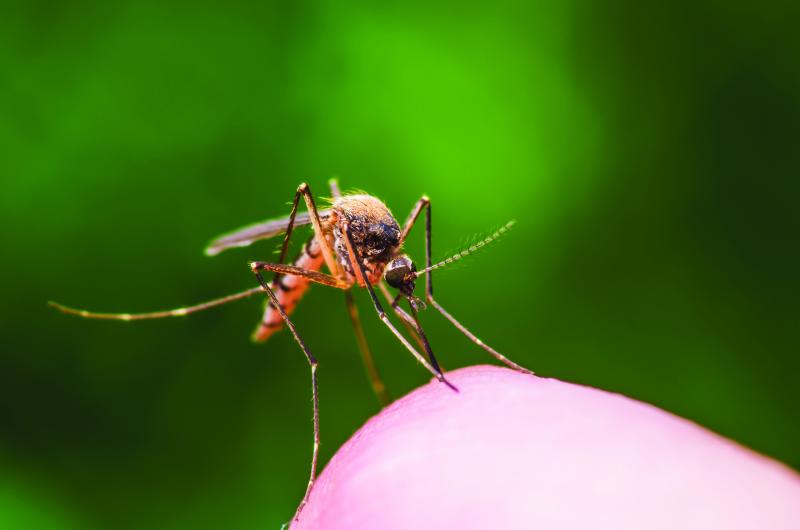
Mosquito Insect [Courtesy]
Temperature and level of precipitation are the most influential climatic components of disease transmission.
This explains why medics inquire which places you have been to.
You are unlikely to contract malaria in places like Nairobi, as opposed to Kisumu and Mombasa counties, but climate change might alter that soon.
The malaria-carrying one is mostly the female anopheles mosquito found in humid and low altitude areas, but Nairobi is mostly cold and conducive to Culex mosquitoes, which don’t transmit malaria.
This explains why medics inquire which places you have been to after visiting the hospital with an ailment as different disease-transmitting pathogens and insects thrive on certain environments.
Dr Andrew Mulwa, the Director of Medical Services, preventive and promotive health in the Ministry of Health says some vector-borne diseases like Kala-alar, bilharzia, cholera, and malaria have prevalence rates determined by climatic conditions and weather patterns.
“You will find high prevalence rates of malaria in low altitude areas that have water bodies such as Kisumu and the coastal region. This is because the female anopheles mosquito thrives in hot and wet areas," he says.
Contrary to popular belief, not all mosquitoes transmit malaria. In fact, those that whine in your ear at night in Nairobi are often Culex mosquitoes, which are not malaria carriers, as opposed to the Plasmodium parasite that causes malaria and is transmitted to humans by the bite of a female Anopheles mosquito.
“This is why some regions have less prevalence of malaria, despite having a lot of mosquitos. Nairobi consists of the Culex mosquito, which is harmless,” says Dr Mulwa.
After the airborne portion of their life cycle, female mosquitoes usually lay eggs on the surface of water or in areas where water can rise, flood the eggs, and stimulate them to hatch.
Dr Mulwa says: “Mosquitos, pathogens, and hosts each endure and reproduce within certain ideal climatic conditions. Changes in these conditions can greatly alter these pathogen transmission/competencies.”
This implies that temperature and level of precipitation (any liquid or frozen water that forms in the atmosphere and falls back to the earth) are the most influential climatic components of disease transmission.
But other factors like sunshine length, sea-level elevation and wind also affect the rates of disease transmission, and according to Dr Mulwa, variability in precipitation may also have a direct influence on the distribution of mosquito-borne diseases.
“When precipitation increases, the presence of disease vectors is also expected to rise due to the expansion of the existent breeding grounds,” he said. “Each mosquito species has unique environmental resilience limits, depending on the availability of favorable aquatic habitats and the closeness of the parasites to humans who serve as their source of blood meals.”
With the ongoing climate change that has been caused by global warming and human activities such as improper waste disposal, experts say there have been changes in temperature, leading to new geographical distributions of disease-causing parasites
“The increase of malaria cases in the cooler regions of the Kenyan highlands may be attributed to climate change, which has led to an increase in mosquitoes in such areas as they warm,” says Dr John Chumo, secretary of the National Environmental Complaints Committee.
He adds: “Increased urbanisation, tourism, and international trade have led some of these species and pathogens to cross local and international borders to new territories. This dispersal poses local and global health threats if proper mitigation measures are not put in place.”
Dr Mulwa says travellers and tourists who have no immunity, for lack of exposure, are most at risk. “Persons with partial immunity traveling out of their home will lose their immunity quite quickly, allowing malaria to attack. Pregnant women and children under five years are especially vulnerable to infection,” Dr Mulwa says, listing Leishmaniasis and bilharzia as the other diseases that are geographical.
Sidebar
Unlike mosquitoes, sand flies do not breed in water
Leishmaniasis is a life-threatening disease caused by Leishmania parasites that are transmitted by female sandflies. Unlike mosquitoes, sand flies do not breed in water, according to Africa Centre for Disease Control.
Their larvae develop in humid areas containing decaying organic matter (burrows, tree holes and caves). However, in most cases, larval breeding habitats are unknown and larvae remain inaccessible to control efforts.
According to experts, leishmaniasis distribution, spread, and prevalence patterns in Kenya have changed over time within and outside the usual regions. This has been attributed to population growth and movement, environmental and climate changes, as well as urbanisation. Bilharzia, also known as Schistosomiasis or snail fever, is a disease caused by parasites (worms called schistosomes) carried by freshwater snails.
The parasites that cause schistosomiasis live in certain types of freshwater snails. The infectious form of the parasite, known as cercariae, emerges from the snail into the water. You can become infected when your skin comes in contact with contaminated freshwater.
Communities living in endemic regions often rely on parasite-contaminated freshwater bodies for their daily water contact activities, resulting in recurring schistosomiasis infection. In such instances, water treatment can provide safe water on a household or community scale.
However, there are no water treatment guidelines that provide information on how to treat water containing schistosome cercariae.
 The Standard Group Plc is a multi-media organization with investments in media platforms spanning newspaper print
operations, television, radio broadcasting, digital and online services. The Standard Group is recognized as a
leading multi-media house in Kenya with a key influence in matters of national and international interest.
The Standard Group Plc is a multi-media organization with investments in media platforms spanning newspaper print
operations, television, radio broadcasting, digital and online services. The Standard Group is recognized as a
leading multi-media house in Kenya with a key influence in matters of national and international interest.











